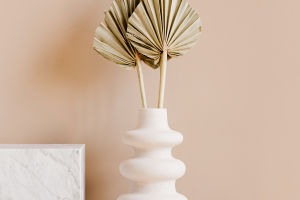When people receive flowers, they all hope that the flowers can last longer, so that the joy of receiving flowers can be maintained for a few more days.
In fact, there are methods and techniques for preserving flowers. So how do you make flowers last longer?
1. Reduce consumption:
When arranging flower branches, in addition to removing dead branches and leaves, it is also necessary to remove as many unnecessary flowers, branches and leaves as possible according to the actual composition requirements.
This not only achieves a clean effect in flower arrangement art but also reduces flower consumption, concentrating water and nutrients as much as possible on the remaining branches.
2. Increase absorption:
This is the "open source" measure. That is, expand the cut of the flower branches as much as possible to ensure the supply of water and nutrients. When trimming, the base of the flower branch should be placed in water, and then the branches should be cut off to prevent the cut from contacting the air.
The cut should be made at an oblique angle to increase the absorption area. This increases the cut surface area by 1-2 times compared to a flat cut; for woody flowers, the cut can be made in a "+" shape or split open; the cut can also be hammered with a hammer to make it crack.
3. Improve water quality:
Only when the water quality remains fresh can it be beneficial to maintain the flowers, which requires changing the water every day, even in winter, the water should be changed every two days.
In nature, rainwater is the most suitable for flower cultivation, while well water, due to its alkalinity, is not suitable for flower cultivation. In addition, add aspirin tablets, a small amount of alcohol, potassium permanganate, alum, salt, etc., to the water. Detergents, fragrances, etc., have sterilizing effects and can dissolve in the sap of the flower branches.
4. Clean the cut:
Sterilizing the cut and removing mucus are also effective methods for maintaining flowers. The cut can be cleaned by blanching, mainly for tender branches, soaking the cut in hot water above 80°C for two minutes; or by scorching, mainly for woody branches, using fire to burn the cut without sap flowing out.
5. Increase nutrition:
When flowers are in full bloom, they need the most nutrition. At this time, vitamin C and sucrose can be added to the bottle.
6. Avoid wind cultivation:
Flowers require a large amount of water, but absorption is limited, so evaporation should be minimized as much as possible, and the key measure is to place flowers in a windproof and sun-sheltered place. Sunlight and wind will quickly dehydrate flowers.
7. Moisturize the branches:
Before arranging flowers, soak the branches in water for several hours or overnight. After arranging, spray clean water frequently to keep them moist.
8. Choose the right flower container:
For flower arrangements with more flowers, it is advisable to use a bulging bottle because it holds more water and the water quality is not easily contaminated. Conversely, narrow or cylindrical containers with less water will deteriorate quickly.
9. Keep away from fruits:
Fruits produce ethylene gas during ripening. This gas is a catalyst for flower aging. Therefore, if fruits are placed next to flowers, the flowers will wither quickly.
In daily life, beautiful details often hide in every corner around us, just like the joy brought by a bouquet. Through simple methods and techniques, we can extend the beautiful time of flowers and let the joy and fragrance last longer. May our lives be as blooming as flowers, full of brilliance and joy.


